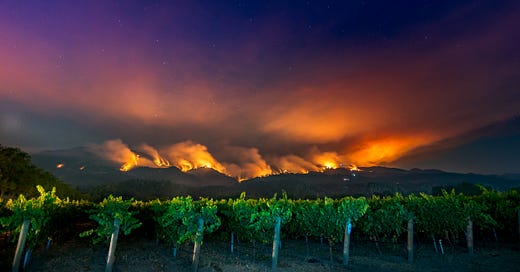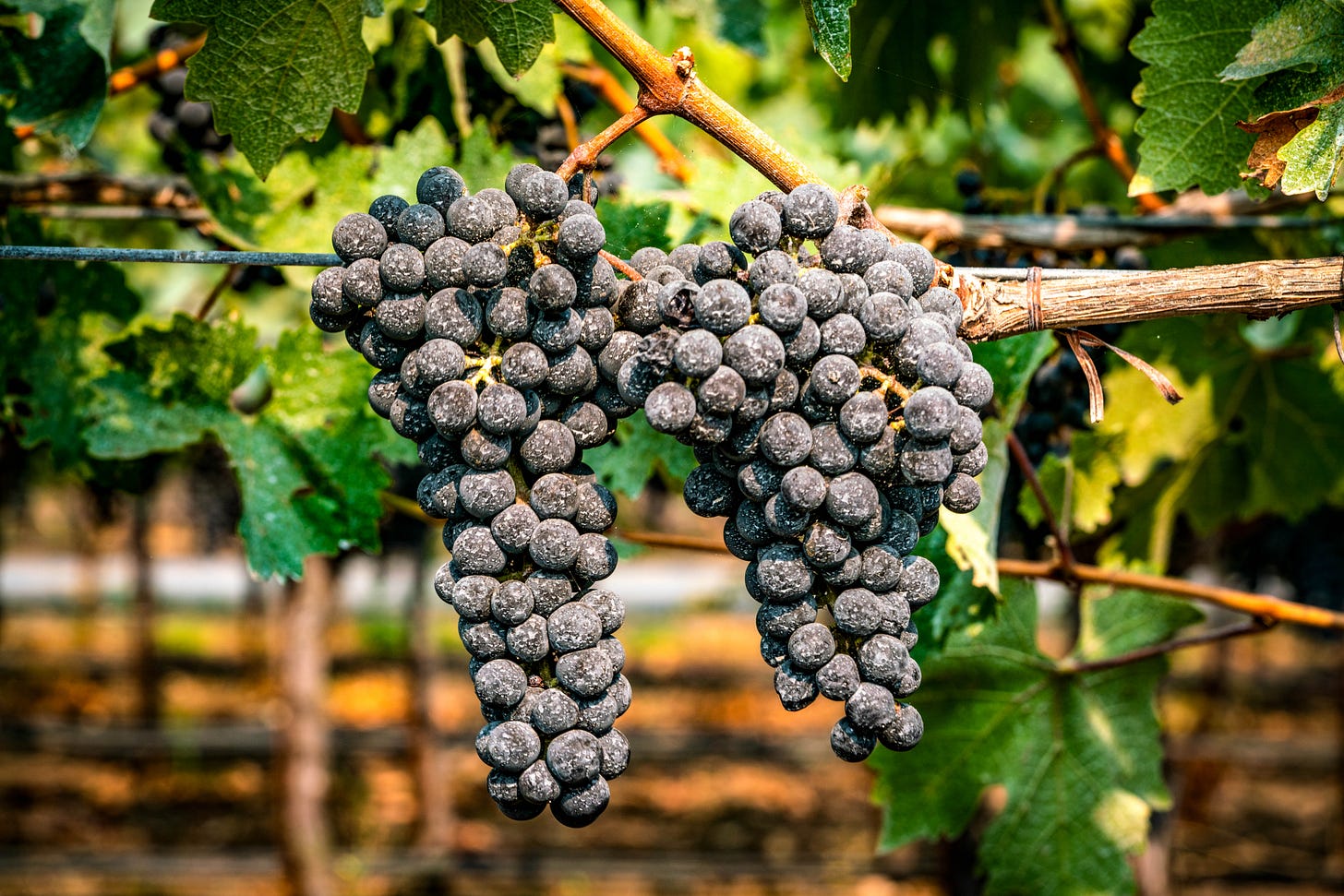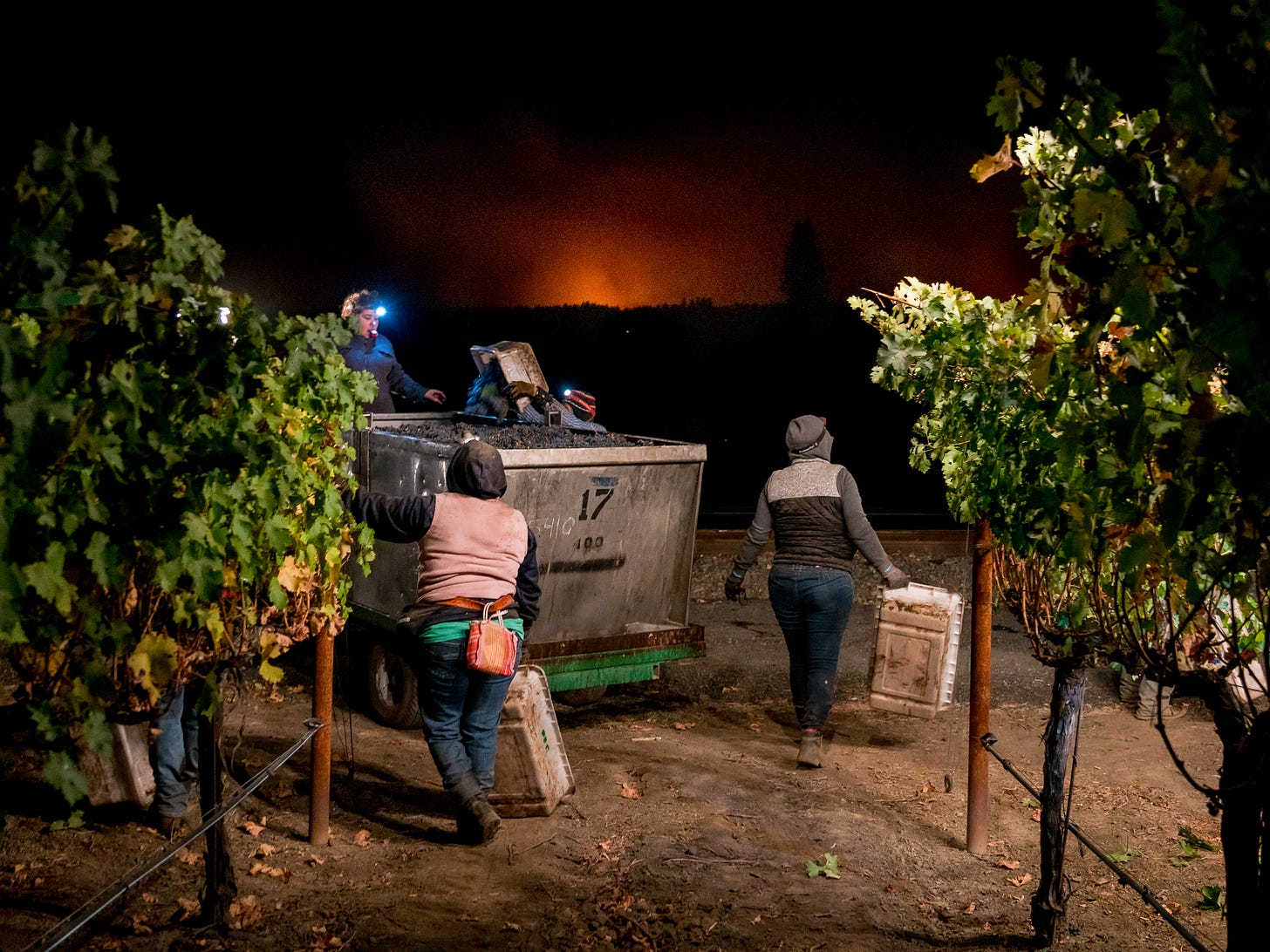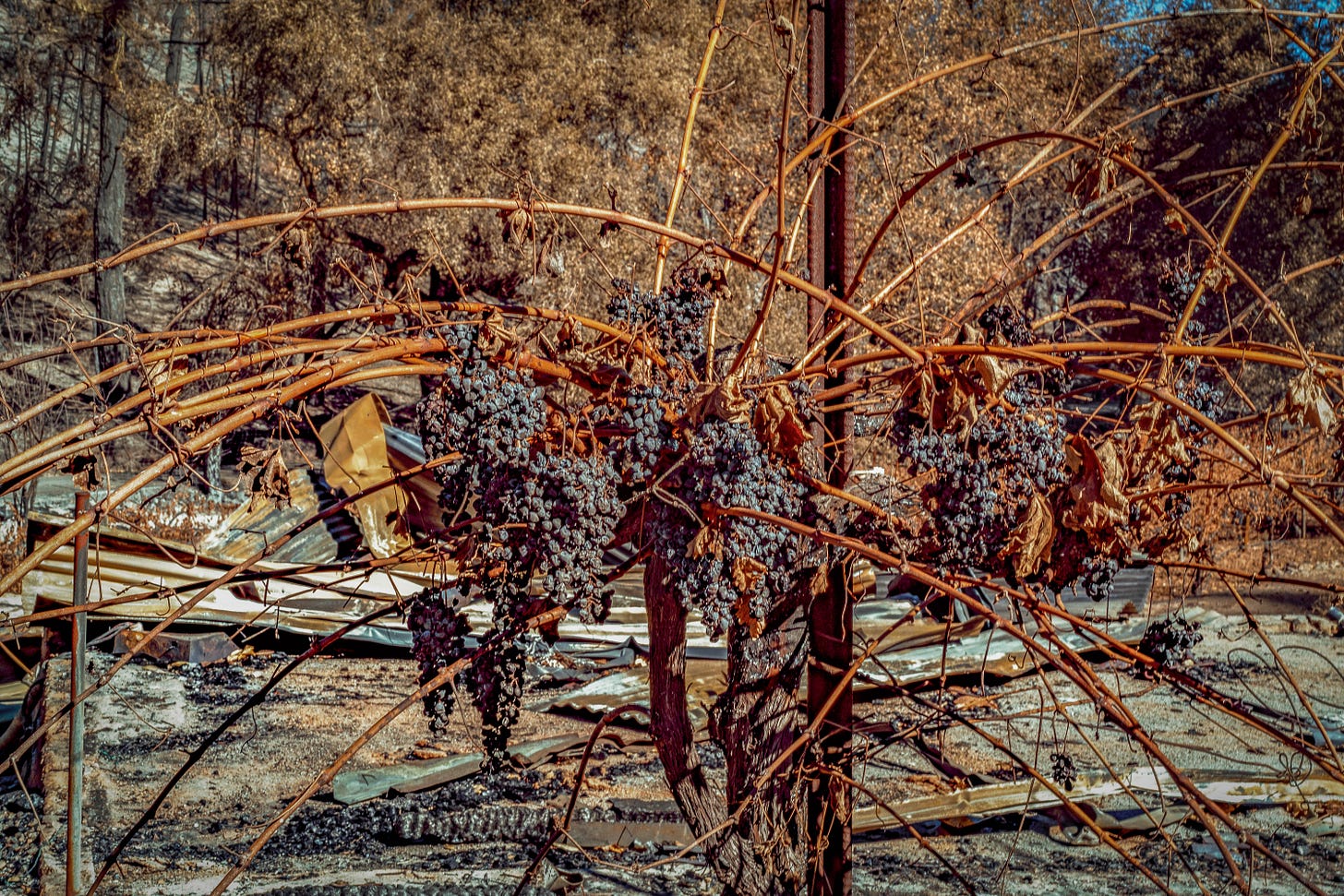NAPA, Calif. — California's wildfires are poised to continue their merciless rampage, and the wine industry waits on edge, facing a menace that extends beyond charred landscapes and lost crops. It's the insidious intrusion of smoke and ash into the once-pure grape clusters — a haunting infiltration that imparts a disagreeable "smoke taint" upon the prized wines of the region.
In response, vintners, scientists and entrepreneurs work fervently to unlock the secrets of this enigmatic scourge. Their quest: to develop new methods of testing for the dreaded taint and purging the offending aromas and flavors from any affected wines.
Wildfires are the new reality
California Department of Forestry and Fire Protection records reveal a disturbing trend. In 2010, wildfires burned 134,462 acres in the state, a figure that surged almost tenfold to 1,248,606 acres in 2017. The situation worsened in 2020, when a record-breaking 3,154,107 acres were set ablaze. In 2021, the flames continued their destructive path, charring 2,568,948 acres. There was some relief in 2022, when the burned area decreased to fewer than half a million acres.
The forecast for the upcoming 2023 fire season remains uncertain. This year’s moderate temperatures and heavy rainfall have resulted in excessive brush growth. This new source of tinder, coupled with an expanding El Niño weather pattern, ominously sets the stage for another potentially catastrophic wildfire season.
Understanding Smoke Taint
During wildfires, smoke's volatile chemicals (phenols) stick to grape skins, eventually being absorbed. During the winemaking process, these phenols bond with grape sugars, creating unpleasant collections of phenolic diglycosides that cause the offending aromatics. One of the biggest challenges in dealing with smoke taint during winemaking is that these offending chemicals can hide from sensory detection, remaining dormant until fermentation, aging or even when enzymes in saliva break the chemical bonds and release the previously trapped ashtray-like flavors.
Quantifying the amount of smoke exposure that leads to taint is essential. Current preharvest grape-testing methods can detect smoke exposure, but often they fail to accurately predict the severity of the final product's taint.
Testing for smoke taint
In 2011 an influential study titled "Free Guaiacol and 4-Methylguaiacol as Markers of Smoke Impact in Grapes and Wines: Observations from the 2008 Vintage in California" identified potential chemical markers of smoke taint. The marker compounds were measured in pureed berries, juice and wine, and it was found that in non-smoke-exposed grapes guaiacol levels were consistently found to be between 0.1 to 0.3 parts per billion, but these levels skyrocketed to as high as 55 ppb in smoke-exposed grapes.
Since then, many labs, including St. Helena’s ETS Laboratories, have been ready to test grapes exposed to wildfires to see if they show elevated levels of these — and many other — compounds that indicate a risk of smoke taint. The challenge with such testing has been twofold. First, the exact amount of noxious chemical exposure that triggers smoke taint is different for each grape type. Second, when a fire strikes a region the demand for testing can overload labs, prolonging wait times for results, often beyond the harvest date, leaving vineyard owners and winemakers facing the risk of making a costly choice devoid of pertinent data. This problem is exacerbated by recent insurance mandates requiring smoke-taint analysis before claim submissions.
Advancing the science of testing, a recent breakthrough by Phil Crews, a research professor of chemistry at UC Santa Cruz and a winemaker, provides potential practical guidelines to use biomarkers for detecting smoke taint in both grapes and wines affected by wildfire smoke. By analyzing more than 200 samples from 21 grape-growing regions across California and Oregon, Crews and his group succeeded in identifying phenolic diglycosides in Cabernet Sauvignon that are released as foul-smelling free phenols during fermentation. The research provides refined data on quantifying phenolic diglycosides in both grapes and wines, including baseline data for unaffected grapes and those exposed to varying levels of wildfire smoke.
Dealing with smoke taint
Wine consumers don't have to worry much about purchasing an ashtray-flavored wine. First, such wine rarely makes it to market, and second, there is no evidence that they are harmful in any way.
However, wine-grape growers and winemakers do worry about smoke taint — some taking daily samples of exposed grapes and sending them to labs for analysis. And although new research is advancing the science of testing, due to the existing limits of existing tests and the uncertainty of what level of smoke taint represents "too much" (which can be greatly influenced by site, variety, time to pick, etc.), the results of such testing are still less definitive than anyone might prefer. Another issue is that due to the relative newness of widespread smoke taint, no normalized standards have been rigorously developed — the Crews findings should eventually help — for what constitutes a "normal" non-smoky year for all wine grapes. Nevertheless, not testing is no longer an option for growers concerned about smoke taint.
Winemakers are often left with the final decision of whether to bring grapes into the winery for processing or to reject the grapes altogether due to excessive smoke exposure. If they do bring them in, the winemaker's first instinct is often to limit the amount of skin contact during processing and fermentation. This approach is most challenging with red wines because that's where the wine gets its color and texture. Other techniques include filtration, fining or the addition of enzymes. Another potential solution being used is "flash détente," a rapid grape-heating process designed to extract color and flavor while evaporating any unwanted aromatics. Neither of these methods is foolproof, however, and they may also eliminate desirable flavors and colors imparted by the skins.
Scientists are also exploring genetically modified yeast strains that might prevent the hydrolysis of sugar molecules, thereby trapping the undesirable smoke compounds. One of the problems of this technique is that within human saliva there is an enzyme that hydrolyzes sugar anyway, thus releasing the smoke-taint aromatics when it matters most — while tasting the wine. Plant breeders dream of creating a strain of grapes with skins that are not able to absorb or process the offending chemicals to begin with, while there are also new organic grape berry “barrier” sprays being tested that might block smoke from entering grapes. Many vineyardists have also started harvesting grapes earlier than normal to avoid the increased risk of fires later in the season.
The future for smoke taint remains hazy
The trajectory of climate change suggests that the challenges posed by wildfires and the ensuing smoke taint are unlikely to diminish soon. Nevertheless, the wine industry's resilience is apparent as it invests millions of dollars and countless research hours annually into the development of new prediction, evaluation and mitigation methods. Consequently, more options exist for predicting, evaluating and dealing with ash, soot and smoke-affected vineyards and the resulting wines, with new standards being developed for assessment and treatment. In addition to exploring novel methods to combat the effects of smoke taint, growers are also altering their vineyard-management strategies to be more resilient in the face of wildfires. This includes creating defensible spaces around vineyards, installing sprinkler systems and ensuring access for fire trucks.
The problem of wildfires is not likely to go away anytime soon, so expect smoke taint to remain just another yearly challenge of growing and making wine in the Napa Valley and beyond.
Tim Carl is a Napa Valley based photojournalist.









Another great article. I’m curious/concerned about this comment though: “This includes creating defensible spaces around vineyards, installing sprinkler systems and ensuring access for fire trucks”.
Does this indicate there will be more deforestation and intrusion into remaining open space?